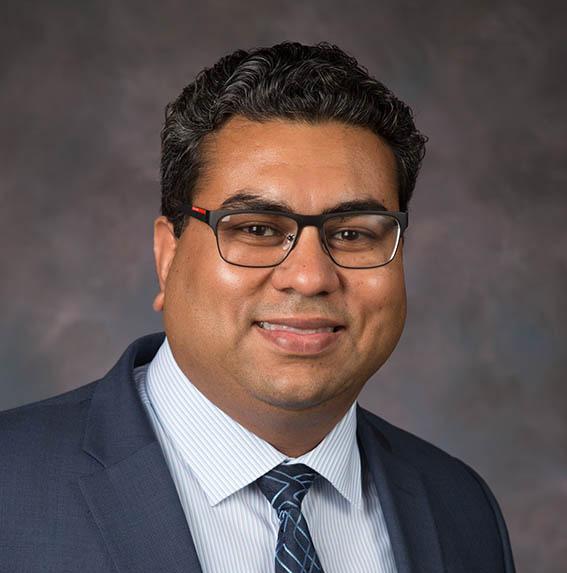
14 minute read
More to Telehealth Than Meets the Screen
MORE TO TELEHEALTH THAN MEETS THE SCREEN Telehealth has become essential to American health care during the COVID-19 pandemic, but is it really the solution to our biggest access-to-care problems?
by Abbie Roth
Advertisement
When COVID-19 ignited stay-at-home After the pandemic hit, Dr. Hoffman says he was surprised orders, public and private insurers at how quickly the initial reluctance and resistance faded quickly relaxed the rules for covering away. “Groups and individuals who I never would have telehealth visits. Health care systems thought would embrace telehealth now talk about how responded in kind by rapidly expanding they can’t imagine a world without it,” he says. their telehealth capacity and training. Nationwide Children’s was a few months into a two-toExpanding telehealth wasn’t as simple as giving the three-year plan to expand telehealth access across the clinicians the “all clear.” institution. That plan was immediately fast tracked to “Telehealth is one of those things that has been evolving slowly over the last 15 to 20 years — especially in terms of using video in addition to voice,” says Jeffrey Hoffman, bring providers in every outpatient service online for telehealth. Between mid-March and mid-June, more than 100,000 telehealth visits had been completed. MD, chief medical information officer at Nationwide “We talk a lot about ‘One Team’ as part of our culture Children’s Hospital. “Before COVID-19, I thought here at Nationwide Children’s. In the case of getting that telehealth was a great idea with limited applications. telehealth up and running, it couldn’t have been truer,” I couldn’t imagine doing specialty care or gaining says Libbey Hoang, vice president of Planning and acceptance of telehealth from providers and patients Business Development at Nationwide Children’s. across the board.” “Experts in technology, EPIC and MyChart, along with
experts in patient education, scheduling, marketing, planning, compliance, legal and reimbursement came together with clinical staff in new ways to streamline processes, share information and get the job done.”
“It’s amazing how much stuff we let get in the way of getting things accomplished. We did in three weeks what we initially expected to take three years,” says Dr. Hoffman. “Our COVID-19 telehealth response really showed that we can do innovative, quality work very quickly. Projects like this typically take forever because we allow them to take forever.”
With all of telehealth’s successes during the COVID-19 pandemic, health care experts — from those in large institutions to those in small private practices — may be wondering how to keep a good thing going. Could this be the solution for access to care problems that have been plaguing health care for decades? What are the considerations needed to make telehealth work for everyone, all the time? TEACHING WITH TELEHEALTH As an academic center, how telehealth would impact trainees — residents, medical students and fellows — was an important consideration.
“Before COVID, I had no personal experience with telehealth,” says Rebecca Wallihan, MD, infectious disease specialist and pediatric residency program director at Nationwide Children’s. “The majority of our trainees also had zero experience, so there has been a lot of learning for everyone.” How to best involve trainees in the telehealth process was a challenge that required some creative problem solving.
“At first, the priority was just to get telehealth up and running. How to bring in the trainees came next,” says Dr. Wallihan. “For most areas, it really wasn’t that difficult — it was just a matter of bringing them into the telephone or video call and figuring out the best way to do that.”
Most residents were able to react to telehealth positively, says Dr. Wallihan. “They are used to FaceTime and other video chat technologies — video telehealth is really an extension of that.”
“One of the things I love about telehealth is the ability to spend more time directly observing how our trainees interact with our patients and families. I’m able to give specific feedback on their ‘bedside’ manner and communication skills,” she adds. DEVELOPING A WEB-SIDE MANNER Once the teams had the technology and capabilities to do telehealth, training and follow up were still needed. Providing family-centered care via a phone call or video call provides its own unique challenges for providers.
“Training in ‘web-side manners’ was crucial for telehealth,” says Ujjwal Ramtekkar, MD, MPE, MBA, psychiatrist and associate medical director for Partners For Kids®, Nationwide Children’s accountable care organization. “Demonstrating to our providers how to establish good eye contact, perform effective assessments and build rapport changed the way it was adopted by providers and families.”

“We talk a lot about ‘One Team’ as part of our culture here at Nationwide Children’s. In the case of getting telehealth up and running, it couldn’t have been truer.” — Libbey Hoang, vice president of Planning and Business Development at Nationwide Children’s Hospital
VIDEO TELEHEALTH TIPS FOR PROVIDERS
• Make sure you are in a quiet, well-lit space with minimal distractions.
• Avoid backlight such as windows or lamps in the background. • Ensure no protected health information is visible in your background. • Remove any reflective surfaces from the background. • Stay in the frame. • Look into the camera when you are talking to the patient, not at the screen. This will look like you are making eye contact with the patient. • Engage directly with the patient. They may fidget or be uncomfortable. Allow them time to warm up to the camera. • Minimize interfering sounds including printers, air conditioners, fans, traffic, pen tapping or keyboard clicking. • Integrate nonverbal communication such as waves, nods and fist bumps to mimic in-person interaction.
• Avoid talking over the patient or the family. • Maintain an open and upright posture, leaning slightly forward to convey attention. • Take advantage of the opportunity to see into the patient’s world –– their home, pets, siblings and other environmental factors you can see on camera can give you valuable insight. Interacting via video or phone call can require a different type of energy, too. Some providers describe feeling more emotionally drained after starting telehealth.
“I was surprised how draining telehealth appointments can be for providers. There is anxiety about technology not working, about delays in the connection, about awkwardness in conversation due to spotty connectivity. I am always surprised when I feel worn out after a 1-to-2-hour telehealth visit,” says Emily Viall, RN, clinical research coordinator in the Abigail Wexner Research Institute at Nationwide Children’s, who has been using telehealth for her ongoing clinical study. “I think that may be related to the learning curve and could be addressed as an opportunity for education for providers.”
The same may be true for families. According to Viall, while families overwhelmingly appreciate the option to use telehealth –– especially during the pandemic –– technical difficulties can be frustrating. It’s important to make sure that each family feels heard and cared for. TELEHEALTH AND CLINICAL RESEARCH Conducting clinical research visits during a global pandemic brings a whole new set of challenges. Researchers at the AWRI have embraced telehealth, from phone visits to video visits and secure emails for photos. By utilizing telehealth, clinical researchers were able to continue many studies. It also gave families involved in many different studies a way to access the study teams for questions and support.
Before COVID-19, clinical research studies sometimes included telephone call visits in the protocol. For one particular study, Viall would use phone visits for education and to replace in-person visits for completing questionnaires, collecting safety data, reviewing adverse events and so on. These phone call visits were used to increase study retention and make it easier for families to participate.
“Families were always happy to learn about the option for a phone visit rather than having to come into the clinic every time,” she says. “Video visits are a new and welcome addition to our toolbox.”
Even with video visits, Viall says that they’ve also had to rely on families taking and sending pictures to
document some physical side effects of the medication they are studying.
“We have really relied on the families to communicate with us and work with us through the pandemic,” she says. “It has also been really wonderful to see patients in their home environments. You get to see what their room and house looks like, their favorite toys, their neighbors, friends and siblings, and you can tell they are more comfortable on their couch in their pajamas. You understand their life better. We do a great job making our kids and families feel comfortable in the research clinic, but this has been really nice to see. On the other hand, my patient population has many behavioral challenges so it is hard for me to watch tantrums happening on the screen and not be able to offer comfort or distraction to the child, as I would if they were in clinic with me.” OFF AND RUNNING – TELEHEALTH FOR BEHAVIORAL HEALTH Telehealth was already earmarked as a priority for meeting a growing need for behavioral health providers. At the behavioral health Summit in March 2020 cosponsored by the Children’s Hospital Association and Nationwide Children’s, telehealth was a topic addressed by many of the breakout sessions.
At Nationwide Children’s, the integration of telehealth in the psychiatry clinic was underway when COVID-19 hit.
In the case of psychiatry and behavioral health, the utility of telehealth has been described across the United States, especially for rural communities. “Whether that’s provider-to-provider telehealth like Project ECHO, where specialists can work with larger groups of primary care providers, or provider-to-patient telehealth, telehealth can increase a patient’s ability to access specialty care, even when there are no specialists in their area,” says Dr. Ramtekkar. “When a family does not have to travel four hours and can get their concerns addressed by experts, it bridges the gap and barriers in care. Using telehealth to achieve this now and in the future is a priority to meet the needs of children.
Patti Markham agrees. Markham is a mother of three, and her youngest son, Leo, is currently receiving care from the Behavioral Health team at Nationwide Children’s.
“A lot of the locations are kind of far away from us. And appointments fill up fast, so you really have to take what you can get,” she says. “So before telehealth, Leo was missing a lot of school. And his dad and I were taking turns missing work, so only one of us could attend the appointment.”
She adds that with telehealth, it’s easier for both parents to be there, to participate fully and add insights. “I feel like everyone is getting a much more comprehensive view of what’s happening.”
Markham also says that doing telehealth visits with her son has its challenges, but the pros outweigh the cons. “My son is a teenager, so we want him to have privacy for the call, but we also need to make sure that he stays on camera, makes eye contact and engages with the doctors and therapists,” she says. “That can be a challenging balance to achieve.”

— Ujjwal Ramtekkar, MD, MPE, MBA, psychiatrist and associate medical director for
Partners For Kids®, Nationwide Children’s accountable care organization

“Telehealth cuts both ways in the push for health equity. The good news is that we can better reach populations who previously struggled to access care because of transportation or household logistics. However, for those with limited internet or device access, telehealth creates a new barrier to accessing care.” — Deena Chisolm, PhD, director of the Center for Innovation in Pediatric Practice and vice president of Health Services Research in AWRI at Nationwide Children’s Hospital
TELEHEALTH IN A POST-COVID-19 WORLD Telehealth has been a tremendous tool during the COVID-19 crisis. But as anyone who has been using it is quick to point out –– it’s not a panacea for health care.
Additionally, while telehealth is viewed by some as increasing access to care by reducing problems such as travel time, childcare for other children, reduced missed work and school time, that’s not true for everyone. Social Determinants of Health Telehealth is not immune to social determinants of health. While it can level the playing field in some areas, it also broadens the technological divide between some populations and health care.
“Telehealth cuts both ways in the push for health equity,” says Deena Chisolm, PhD, director of the Center for Innovation in Pediatric Practice and vice president of Health Services Research in AWRI. “The good news is that we can better reach populations who previously struggled to access care because of transportation or household logistics. However, for those with limited internet or device access, telehealth creates a new barrier to accessing care.”
Areas in rural southern and southeastern Ohio, which are part of the Nationwide Children’s service area, don’t necessarily have access to broadband or wireless internet. They’re using the data plan for their cell phone –– which might not get a clear signal even in their home. Some providers have shared stories about patients in these areas driving to a library or Walmart parking lot to use the Wi-Fi for their visit. With this creative solution to the barrier that telehealth introduces, some of these families reported that the telehealth option was still preferable to driving multiple hours each way for an in-person visit.
“As we move forward, we will need innovation to use modalities beyond videoconferencing to get true advantage of virtual care that includes other digital health modalities to connect families, emergency departments and schools with the ‘hub’ for timely care,” says Dr. Ramtekkar, who was recently named medical director for Tele/Virtual Health for Behavioral Health at Nationwide Children’s.
Telehealth is more than a video conference with a provider –– though that has been the biggest area of growth and most common form during the COVID-19 pandemic. Telehealth also encompasses the use of auxiliary tools (i.e., blood pressure cuffs, scales, etc.), remote monitoring devices (i.e., continuous glucose monitors, heart rate monitors, etc.) or mobile apps that help manage chronic conditions.
“We will be doing our field and our patients a great disservice if we limit telehealth to phone calls and video chats,” says Dr. Hoffman. “Telehealth can truly be about remote care, and that will manifest in a lot of ways if telehealth is to live up to its promise.” Reimbursement “The advancement of telehealth has historically been crippled by reimbursement-related decisions,” says Dr. Hoffman. “This approach to avoiding fraud and abuse is short sighted, and it applies to both commercial and public payors. Telehealth has a place in U.S. health care –– it’s useful, effective and desirable for many situations.”
Furthermore, Dr. Hoffman suggests that telehealth reimbursement rates should be comparable to those of in-person visits.
“The idea that a telehealth visit should be billed at only 80 cents on the dollar is wrong. Just as much, if not more, work and risk and decision making is involved in a telehealth visit compared to a traditional visit,” he says.
As providers and insurers work out which types of visits are most amenable to telehealth, many wonder if the pendulum will swing to the point of requiring telehealth visits. Keeping it Optional “I appreciate having the telehealth option –– but if my child or I feel more comfortable coming into the office for a visit, we should have the option to do so,” says Maria Angel, a parent on many family advisory committees at Nationwide Children’s.
Angel’s two sons are on the autism spectrum and getting to appointments can be a time-consuming and difficult process for everyone.
“By the time we transition out of the house, into the car, commute, and into the doctor’s office or clinic, just for 15 minutes with the provider –– that can be a lot,” she says. “For my son’s recent medication change appointment, telehealth was very helpful. My son could stay in bed and we could talk with our doctor and get the appropriate medication prescribed.” On the flip side, her older son (17 years) wanted to see the doctor in person, so they rescheduled his yearly appointment after the stay-at-home order had passed.
“Seeing the doctor in person was important to him, so we are making that happen,” Angel says. “Telehealth options are important, but they should be just that –– options. Some kids will have a hard time with video conferencing. Some really hate seeing themselves on the screen.”
“This new era of telehealth is as consumer-focused as it gets,” says Dr. Hoffman. “Even if a visit is amenable to be a telehealth visit, the patient or family should be able to choose an in-person visit if that’s what they prefer.”
Paying for Telehealth As telehealth progresses, experts are all painfully aware that the ability to build upon successes and experience obtained during the COVID-19 pandemic will depend greatly on how telehealth reimbursements play out. To learn more visit
PediatricsNationwide.org/Paying-For-Telehealth

“The advancement of telehealth has historically been crippled by reimbursement-related decisions. This approach to avoiding fraud and abuse is short sighted, and it applies to both commercial and public payors. Telehealth has a place in U.S. health care – it’s useful, effective and desirable for many situations.” — Jeffrey Hoffman, MD, chief medical information officer at Nationwide Children’s Hospital








